1. Кіріспе
A plug valve is a quarter‑turn rotary valve that regulates flow by rotating a cylindrical or conical plug inside the valve body.
When the plug’s through‑bore aligns with inlet and outlet ports, fluid passes freely; a 90° rotation closes the port.
Modern plug valves—refined through advances in metallurgy, өңдеу, and sealing technology—are essential in oil & газ, химиялық, water treatment, and power‑generation industries.
2. What Is a Plug Valve?
А plug valve is a simple, robust quarter‑turn valve used to start, stop, or divert fluid flow in piping systems.
At its core, the valve consists of a hollow, cylindrical or tapered “plug” that sits within a matching cavity in the valve body.
When the plug’s internal passage (the bore) aligns with the pipeline ports, fluid flows freely; a 90° turn of the plug rotates the bore away from the ports, shutting off the flow.
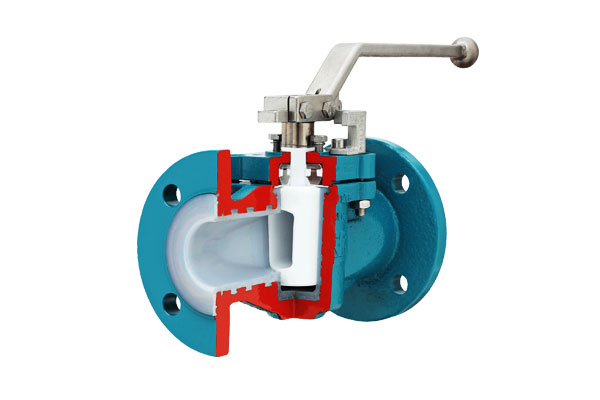
Key Клапан компоненттері
- Body: Houses the plug and provides inlet/outlet connections (фланурды, бұрандалы, or welded).
- Plug: The rotating element, shaped either as a straight cylinder or a cone, containing the port(s).
- Seats: Provide sealing between plug and body; can be metal-to-metal surfaces or resilient inserts (Ptfe, резеңке).
- Сабақ & Handle/Actuator: Transmits torque from the operator (lever, gearbox, pneumatic or electric actuator) to the plug.
Operating Principles
Rotary Flow Control
Plug valves operate by rotating the plug around its axis—requiring just a quarter turn for full open or full close.
This allows rapid actuation: typical manual operation takes less than one second, and automated pneumatic or electric actuators can complete the stroke in 0.5–2 seconds.
Seal Formation
- Metal‑to‑Metal Seals: The plug’s hardfaced surface (often coated with Stellite) directly contacts the body’s bore.
Under line pressure, the plug presses into the body, enhancing the seal.
These valves withstand temperatures up to 550 °C and high‑pressure applications (ANSI класы 600 and above), but require higher break‑away torque (100–500 Nm for DN 50–200 valves). - Resilient (Soft) Seats: Elastomeric or PTFE rings around the plug bore provide a conforming seal with minimal torque (10–50 Nm for DN 15–100 valves).
Soft‑seated plug valves achieve bubble‑tight shutoff per API 598 but are typically limited to temperatures below 200 °C and pressures under ANSI Class 300.
Torque Requirements & Actuation
Torque to operate a plug valve depends on size, seat type, and service conditions. As a rule of thumb:
- Soft‑seated DN 50 valves require ~15 Nm to open; soft‑seated DN 200 valves up to 60 Л.
- Metal‑seated DN 50 valves may need 100 Л; metal‑seated DN 200 valves up to 400 Л.
Manual Actuation: Lever or handwheel, often with a gearbox for larger valves.
Pneumatic Actuation: Double‑acting or spring‑return cylinders for rapid, reliable quarter‑turn operation—cycle times <1 s.
Electric Actuation: Offers precise position control and feedback for integration with DCS/SCADA systems; typical stroke times of 2–5 s.
3. Types and Basic Designs of Plug Valve
Plug valve is engineered in various configurations to meet a wide range of process requirements.
Key design distinctions are based on lubrication method, plug geometry, port configuration, and internal flow path.
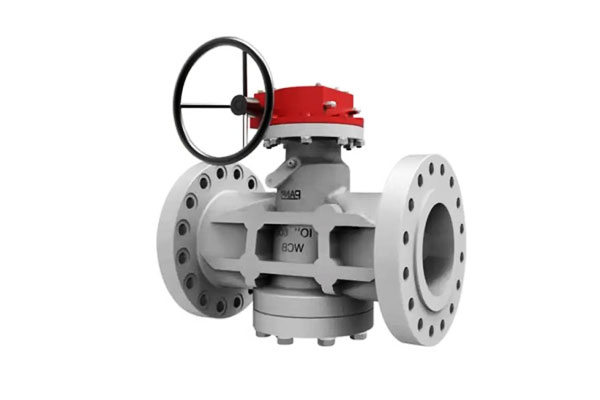
Lubricated vs. Non-Lubricated Plug Valves
- Lubricated Plug Valve
These valves rely on the injection of a sealant—typically a graphite- or PTFE-based compound—between the plug and the valve body.
The lubricant serves multiple roles: it reduces friction during operation, enhances sealing integrity, and provides a protective barrier against corrosive or abrasive media. - Non-Lubricated Plug Valve
These designs use self-lubricating materials—such as PTFE (Polytetrafluoroethylene) with glass fiber reinforcement—for the seat or employ hard-coated plugs (E.Г., electroless nickel or hard chrome coatings with surface hardness > 60 Ткект) to minimize friction.
Plug Configurations: Cylindrical, Conical & Trunnion-Mounted
- Conical (Tapered) Plug
Featuring a taper that matches the valve body’s seat angle, conical plugs are self-aligning under line pressure, providing a more secure and leak-tight seal.
They are especially effective in high-pressure applications (≥2,500 psi / 172 bar). - Cylindrical Plug
These plugs have parallel sides and rely on spring-loaded seats or resilient inserts to maintain contact.
Cylindrical configurations are better suited for low to moderate pressure systems and are often used in compact or low-cost valve designs. - Trunnion-Mounted Plug
In this design, the plug is guided by upper and lower trunnions, which reduce torque requirements and wear on sealing surfaces.
This structure is preferred for large-diameter valves (≥12″) or extremely high-pressure applications (дейін 15,000 пси / 1,034 bar), such as subsea or high-integrity pressure protection systems (HIPPS).
Multi-Port Plug Valve
- Three-Way Plug Valve
Designed with L-shaped or T-shaped plug passages to divert flow between three ports.
Common in mixing, bypassing, or diverting services (E.Г., blending hot and cold water streams, sampling systems, or line switching). - Four-Way Plug Valve
Include cross-shaped or double-L internal passages to reroute flow between two inlet-outlet pairs.
These are widely used in batch chemical operations and reactor feed alternation, allowing complex process sequences with minimal valve count.
Port Size Configurations: Full-Port vs. Reduced-Port
- Full-Port Plug Valve
The internal flow passage matches the diameter of the connecting pipeline (E.Г., a 2-inch valve has a 2-inch port).
This design minimizes pressure drop and is essential where flow efficiency or pigging is critical.
Typical Cv for 2″ full-port plug valve: ~50. - Reduced-Port Plug Valve
The flow path is one nominal pipe size smaller than the inlet/outlet connections (E.Г., a 2-inch valve with a 1.5-inch bore).
This design reduces material and manufacturing costs but introduces a higher pressure drop.
Typical Cv for 2″ reduced-port valve: ~30.
4. Materials and Construction of Plug Valve
The material selection and construction of a plug valve are critical to its performance, төзімділік, and chemical compatibility in demanding industrial environments.
Each component—the body, plug, орындар, and internal seals—is engineered using materials tailored to withstand specific pressures, температуралар, and process media.

Body & Plug Materials
| Материал | Standard/Grade | Негізгі қасиеттері | Типтік қосымшалар |
| Шойын | ASTM A126 Class B | Economical, suitable for low-pressure systems; limited corrosion resistance | Water supply, Hvac, municipal systems |
| Көміртекті болат | ASTM A216 WCB | High mechanical strength; suitable for medium-high pressure/temperature | Майлау & газ, бу, petrochemical pipelines |
| Тот баспайтын болат | ASTM A351 CF8/CF8M (316SS) | Тамаша коррозияға төзімділік, especially against chlorides and acids | Chemical plants, food/pharma, Теңіз орталары |
| Никель қорытпалары | Hastelloy C-276, Жұқпалы 625, Моник 400 | Superior resistance to aggressive chemicals and high temperatures | Acid handling, оффор, gas scrubbing |
| Ішкі үтік / Қола | ASTM A536 / ASTM B62 | Good mechanical properties with cost-effectiveness | Ауыл шаруашалафы, potable water, general plumbing |
Орын & Liner Materials
| Материал | Temp Range | Негізгі ерекшеліктері | Recommended Services |
| Ptfe (Teflon) | –50°C to +230°C | Low friction, excellent chemical inertness | Ас, фарма, corrosive chemical handling |
| Filled PTFE | –50°C to +260°C | Reinforced with glass or carbon for better wear and strength | High-cycle chemical systems |
| Elastomers (EPDM, FKM) | –30°C to +200°C | Good sealing flexibility, resistant to water, ауа, and light hydrocarbons | Суды тазарту, Hvac |
| Flexible Graphite | –200°C to +540°C | High-temp resistance, fire-safe; used in critical sealing | Steam lines, refinery, high-temp pipelines |
| Metal-to-Metal (Жұлдыз, Chrome-Plated) | Up to 650°C | Hard sealing surface for erosive or abrasive fluids | Slurries, abrasive oils, fertilizer plants |
Lubricants (for Lubricated Plug Valves)
| Lubricant Type | Негізгі сипаттамалары | Service Suitability |
| Graphite-Based Grease | High-temperature resistance, low friction | Steam, heavy oil, refinery applications |
| Ptfe / MoS₂ Compounds | Low coefficient of friction, chemically inert | Corrosive gas, chemical feedlines |
| Silicone-Based Sealants | Neutral behavior, effective in a wide temperature range | Natural gas distribution, general service |
5. Performance Characteristics of Plug Valve
Plug valves are known for their simple operation, robust sealing, and bidirectional flow capabilities.
Дегенмен, their performance varies significantly based on design, Материалдық таңдау, and service conditions.
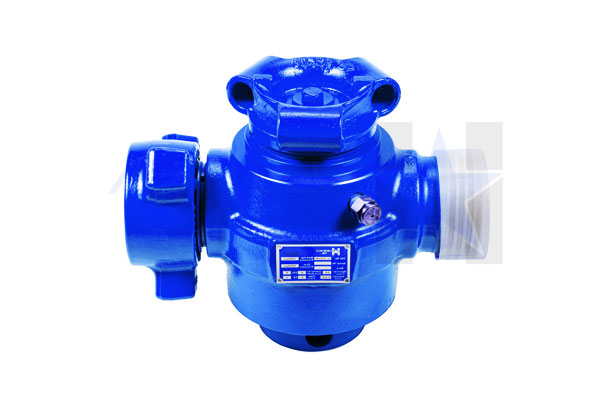
Pressure-Temperature Ratings
Plug valves are rated according to industry standards such as Апи 599 жіне Исо 17292, which define safe operating pressure limits at various temperatures.
These ratings depend heavily on the valve’s body material жіне seat design.
| Материал | ASME Class | Max Pressure (psig) | Max Temp (° °) |
| Көміртекті болат (Wcb) | 150 | ~285 @ 38°C | ~425°C |
| Тот баспайтын болат (Cf8m) | 300 | ~740 @ 38°C | ~540°C |
| Қорытпа (Жұқпалы 625) | 600 | >1,480 @ 38°C | >650° ° |
Seal Tightness & Leakage Classes
Plug valves, especially with soft seats or injected grease, can achieve bubble-tight shutoff. Leakage standards are tested per:
- Апи 598: Pressure test protocol for industrial valves
- Исо 5208: Valve leakage classification
- Leakage Class VI (soft seat): Essentially zero visible leakage
- Leakage Class IV (metal seat): Acceptable for most industrial gas and liquid services
Lubricated plug valves rely on grease to maintain seal integrity and require periodic re-injection, сол екі арада non-lubricated versions use elastomer or PTFE sleeves that can wear over time.
Flow Characteristics (Cv Values)
Plug valves exhibit linear or equal-percent flow control behavior, depending on port geometry (round vs. rectangular or V-notch).
Though primarily used for isolation, some plug designs allow moderate throttling.
- Full-Port Plug Valve (2-дюймно):
-
- Cv ≈ 45–55 (high flow efficiency)
- Reduced-Port Plug Valve (2-дюймно):
-
- Cv ≈ 25–35 (higher pressure drop)
Cv (Flow Coefficient) represents the flow rate in gallons/minute of water at 60°F that will flow through the valve with a 1 psi pressure drop.
Torque Requirements & Actuation
Plug valves typically require higher operating torque than ball or butterfly valves due to larger contact areas between the plug and seat.
| Клапан түрі | Typical Torque (Nm for 2″ Valve) |
| Lubricated Plug Valve | ~50–100 Nm (depends on lubricant film) |
| PTFE-Lined Plug Valve | ~30–60 Nm |
| Metal-Seated Plug | >100 Л (requires gear or actuator) |
6. Application Fields of Plug Valves
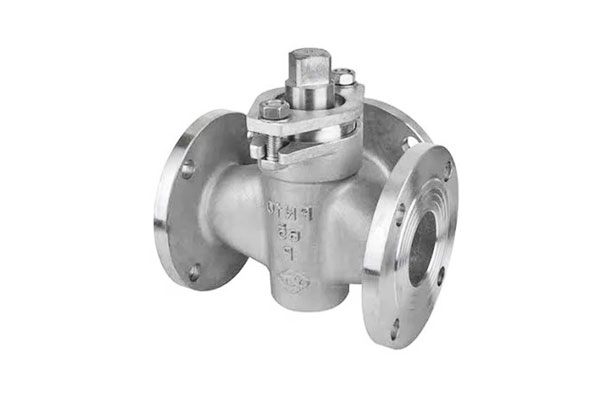
- Майлау & Газ (Upstream, Midstream, Downstream)
- Chemical & Petrochemical Industry
- Суару & Wastewater Treatment
- Электр қуатын өндіру
- Pulp & Paper Industry
- Mining & Mineral Processing
- Hvac & Building Services
- Ас & Beverage Industry
- Теңіз & Offshore Engineering
- Фармацевтикалық & Biotech Industry
- Сұйытылайды & Cryogenic Systems
- Болат & Metallurgical Plants
- Refining & Bulk Storage Terminals
- Textile & Dyeing Industry
- Fire Protection Systems
7. Advantages and Limitations of Plug Valve
Advantages of Plug Valve
- Simple Design: Minimal internal components, making maintenance straightforward.
- Quick Operation: 90-degree quarter-turn allows fast open/close action.
- Tight Shutoff: Excellent sealing capability, especially with resilient seats or lubricant.
- Bidirectional Sealing: Seals effectively in both flow directions.
- Compact Size: Short face-to-face dimensions compared to gate or globe valves.
- Multi-Port Options: Available in 3-way or 4-way configurations for flow diversion or mixing.
- High Durability: Suitable for abrasive, corrosive, or slurry media (with appropriate materials).
- In-Line Maintenance: Many designs allow servicing without removing the valve from the pipeline.
Limitations of Plug Valve
- High Operating Torque: Especially in metal-seated or larger valves; may require gear or actuator.
- Friction Wear: Metal-to-metal designs can experience galling and wear over time.
- Lubrication Needs: Lubricated plug valve require periodic re-greasing to maintain sealing and ease of operation.
- Құны: Can be more expensive than ball valves in similar pressure/temperature ranges.
- Limited Throttling: Not ideal for precise flow control due to potential erosion and wear in partially open positions.
- Size Constraints: Less common in sizes above 24 inches due to torque and manufacturing limits.
8. Comparison: Plug Valve vs. Доп, Қақпа, and Butterfly Valves
| Аспект | Штепсельдік клапан | Доп клапан | Қақпа клапан | Көбелек клапан |
| Жобалау | Simple body and tapered/cylindrical plug | Rotating spherical ball with bore | Rising wedge or parallel gate disc | Disc rotates on a central shaft |
| Operation | 90° quarter-turn | 90° quarter-turn | Multi-turn (slow) | 90° quarter-turn |
| Sealing Capability | Үздік (especially lubricated types) | Өте жақсы (tight shutoff) | Жақсы (metal-to-metal contact) | Moderate to good (depends on seat design) |
| Throttling | Шектеу шектеулі, not recommended | Шектеу шектеулі (not ideal for throttling) | Acceptable for minimal control | Fair to good control depending on design |
| Torque Requirements | Биік, especially for larger valves | Байсалды | Low to high (depending on pressure/size) | Төменге дейін |
| Қолдау | Байсалды (lubrication required for some types) | Аласа (minimal maintenance) | Биік (seat wear, stem packing) | Төменге дейін |
| Suitability for Slurry/Abrasive Media | Жақсы (especially with metal seats) | Жарлы (may clog or erode ball seat) | Көрме | Fair to good with suitable disc materials |
| Multi-Port Options | Иә (3-way, 4-way) | Иә (limited 3-way availability) | No | No |
| Қысым төмен | Төменге дейін (depends on port size) | Аласа (full bore design) | Аласа | Байсалды |
| Space Requirement | Compact face-to-face, larger actuator for torque | Compact | Long face-to-face (vertical space needed) | Very compact |
| Құны | Орташа және жоғары (especially metal-seated) | Байсалды | Төменге дейін | Төменге дейін |
| Қолданбалар | Chemical, майлау & газ, қиыршық, multi-directional flows | General use, water, майлау & газ, shutoff | Waterworks, isolation, non-frequent operation | Hvac, water, low-pressure gas, large pipe diameters |
Summary:
- Use Plug Valves when you need tight shutoff, bidirectional sealing, or multi-port flow in tough services like slurries or chemicals.
- Шар клапандары are ideal for fast shutoff and minimal pressure drop in clean media applications.
- Қақпа клапандары suit infrequent isolation in large-bore systems.
- Butterfly Valves excel in space-limited, low-pressure environments with large diameters.
9. Sizing, Selection & Installation Guidelines
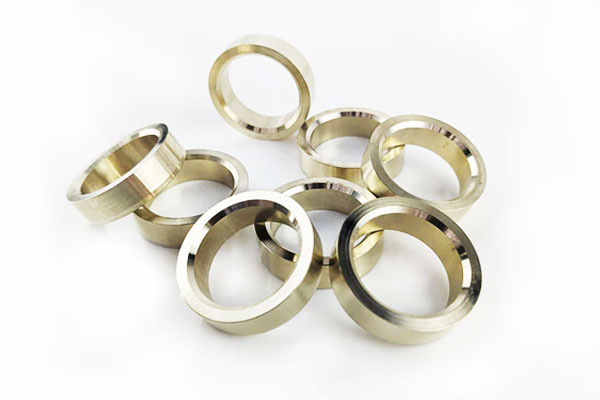
- Media and Conditions: Match body and seat materials to fluid chemistry, температура, және қысым.
- Sizing: Use Cv calculations to ensure required flow at expected ΔP; select actuators to deliver 1.5× break‑away torque.
- Installation: Orient plug vertically in lubricated valves to prevent grease pooling; maintain 1× valve length of straight pipe on each side for optimal performance.
10. Қолдау, Inspection & Troubleshooting
- Майлау: Every 6–12 months or 5,000 циклдар; use manufacturer‑approved grease.
- Seat Replacement: In many designs, seats can be changed in-line without body removal.
- Common Issues: Galling on metal seats remedied by relubrication; graphite packing leaks corrected by repacking; plug erosion addressed by Stellite overlays or seat refurbishment.
11. Стандарттар, Certifications & Testing
- Апи 599: Inspection and test procedures.
- Исо 17292: Performance requirements for plug, доп, and butterfly valves.
- MSS SP‑79/SP‑80: Guidelines for lubricated and non‑lubricated plug valves.
- Certifications: API Monogram, CE marking, SIL ratings for safety instrumented systems.
12. Қорытынды
Plug valves offer a unique blend of simplicity, жылдамдық, жіне ә маяғы across a diverse array of process industries.
By carefully selecting body, plug, and seat materials—and by adhering to best practices in sizing, арнату, and maintenance—engineers can leverage plug valves for reliable isolation, diversion, and rudimentary flow control in virtually any fluid service.
Осы: Талап етілетін қосымшалар үшін жоғары дәлдікті клапанды шешу
Осы дәлдік клапаны құю қызметтерінің мамандандырылған провайдері болып табылады, Сенімділікке қажет салаларға арналған жоғары өнімді компоненттерді жеткізу, Қысымның тұтастығы, және өлшемді дәлдік.
Шикі құю өнімдерінен толық өңделген клапан және жиналыстар, Осы Жаһандық стандарттарға сәйкес келетін түпкі шешімдерді ұсынады.

Біздің клапанның құю сараптамасы кіреді:
Инвестициялық құю Клапандар үшін & Жиіту
Жоғалған балауызды кастинг технологиясын пайдалану кешенді ішкі геометриялар мен күрделі төзімді клапан компоненттерін ерекше беттік әрлеуі бар.
Құмның құюы & Қабықшаны құю
Орташа және үлкен клапан денелеріне өте ыңғайлы, фланецтер, және Bonnets-in тұрмыстық өндірістік қосымшалар үшін үнемді шешім ұсынады, Соның ішінде май & Газ және электр қуатын өндіру.
Клапанға арналған дәл өңдеу & Мөрді мінсіздігі
CNC өңдеу орындықтар, Жіптер, және герметикалық беттер барлық құятын бөліктің өлшемді және тығыздау талаптарына сәйкес келеді.
Сыни қолдануға арналған материалдық ауқым
Тот баспайтын болаттардан (CF8 / CF8M / CF3 / CF3M), жез, Ішкі үтік, дуплексті және жоғары қорытпалар үшін, Осы Жабдықтар коррозияға негізделген клапан құймалары, Жоғары қысымды, немесе жоғары температуралы орта.
Сізден жасалған инженерлік бақылау клапандарын қажет етпеңіз, plug valves, Глобус клапандары, қақпа клапандары, немесе өнеркәсіптік клапан құймаларының жоғары көлемді өндірісі, DEZE is your trusted partner дәлдік үшін, төзімділік, және сапа кепілдігі.
ЖҚС
When should I choose a plug valve over a ball valve?
Бас тарту plug valves in high‑temperature or abrasive services, or where simple quarter-turn, bidirectional operation is needed.
How often should a lubricated plug valve be re-lubricated?
Typically every 6–12 months or after 5,000–10,000 cycles, depending on service severity.
Can plug valves be used for throttling service?
Limited throttling is possible with equal‑percent plugs, but seat wear increases; globe valves excel at precise flow control.
What causes plug valve leakage and how is it fixed?
Wear or damage to seats and plugs leads to leakage; remedy via seat replacement, plug re-lapping, or re-lubrication for metal‑to‑metal valves.



